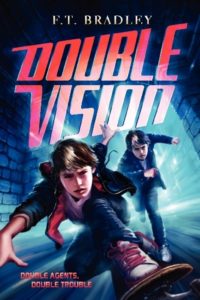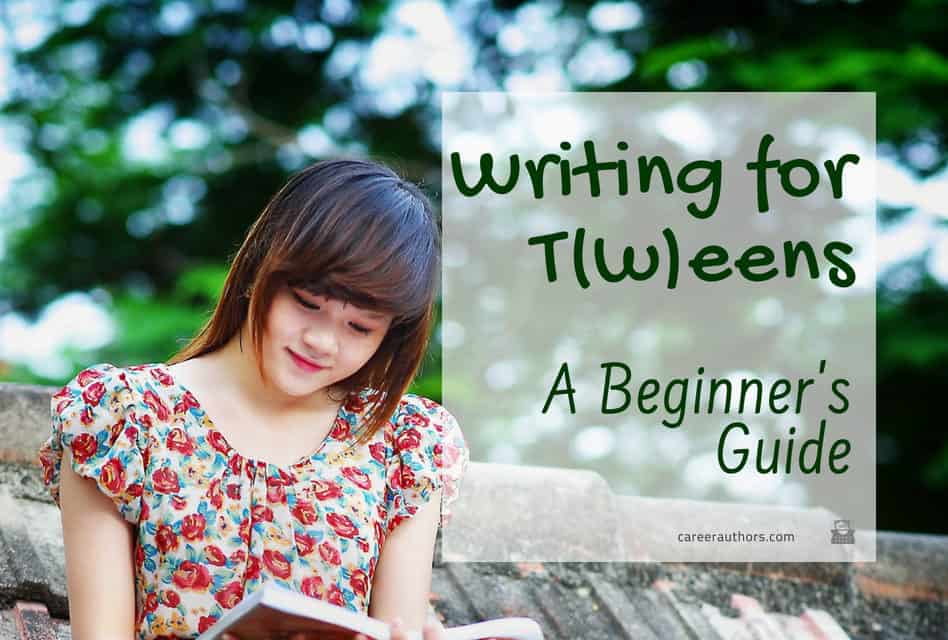This happens a lot: I sit at a book festival or signing event, and a fellow author or other interested party steps up to my table of books. “So. You write for kids?”
“Yes,” I say, pointing at the Double Vision books. “It’s middle-grade, like Spy Kids, only it’s a book.”
I can usually tell by the person’s expression if they’re familiar with middle-grade (it’s not YA) or with kids’ books at all. And if they aren’t, I’m only happy to explain, because I love writing for tweens.
For my fellow writers: middle-grade and YA is selling really well right now, and it’s here to stay.
So, if you’re thinking of writing for kids, I’ll give you a few tips to get you started.
Know your audience
Middle-grade, YA—what’s the difference anyway? Although those two genres are often lumped together, they really are two very different age groups. Think of middle-grade as books for middle-schoolers, and YA for kids in high school—at least to start. (And if you want to know how long these books should be, we at Career Authors have got an article for you. Of course we do.)
To better understand whether your idea for a book falls in the YA or middle-grade (MG) category, take a trip to your bookstore or library. Each category is shelved in a different spot; look for books that are similar to your work-in-progress. When writing YA, you can pretty much write what you want, since adults make up a good chunk of the readers in this category. MG comes with a few more rules.
So what should your story be about? Try to remember what it felt like to be a teen, or twelve years old. You’re gaining independence, you’re figuring out who you are, and your friends are becoming more important.
Now take that point of view and add a good story—whether it’s an adventure, a coming-of-age story, or a full-blown fantasy world you’re creating, as long as you look at your fictional world from a t(w)een’s perfective, you’re in good shape.
Know your audience in the wings
This part applies more to MG. Since your tween reader still relies on (grand)parents, librarians, teachers and other adults in their life to give them their books, they’re your audience, too. In the children’s book world, they’re called gatekeepers: these adults make sure only appropriate content makes it to the hands of your middle-grade reader.
So what does this mean to you as the writer?
Keep the s-e-x and bad language for YA, have any violence at a PG level, and generally watch what messages could be inferred from your tween protagonist’s behavior. Keep it fairly clean, in other words.
If your story concept breaks these rules in a big way, you’re probably better off writing YA.
Though this gatekeeper term sounds a bit foreboding, these adults only have your tween reader’s best interests at heart. Librarians, parents, and teachers are your filter—respect them.
Leave the lessons for your own kids
“My book teaches kids how bullying is bad,” is something I hear very often. A lot of writers begin writing for kids because they feel strongly about imparting a life lesson of some sort. While that sentiment is great, it rarely leads to a successful project.
Think about it: do you enjoy getting life lessons in your fiction?
Exactly.
Now, that doesn’t mean you can’t incorporate issues like bullying, or healthy self-esteem for girls. Just show them, realistically, in the world you’ve created. Have your character figure it out—not the adults in the story.
It’s okay to have a mentor of sorts, but kids prefer to read about kids who solve their own problems. The best children’s book writers are ones who still remember what it was like to be a kid.
Read! It’s fun over at the YA and MG side
This is the most important rule of all: read the genre you’re writing in.
YA and MG books are fun! Re-discover your childhood favorites, read what’s new (there are some amazing books being published now), and try to define why you love them so much.
Another good place to look is award-winning juvenile titles in your genre—like the Edgars in mystery, for instance. The nominees are great titles to read, to gauge what’s the best in YA and MG in your genre.
Writing for t(w)een readers is fun, and a great change of pace if you’re used to writing for adults. You get to be a kid again through your work of fiction—now who doesn’t want that?
Have something to add about writing for t(w)eens? Let us know on Facebook.

 Fleur (F.T.) Bradley is the author of the Double Vision trilogy (HarperCollins Children’s), a funny middle-grade spy adventure series School Library Journal calls “a must-read for mystery fans, including reluctant readers.” Originally from the Netherlands, she now lives in Colorado Springs with her husband, two daughters, and entirely too many cats.
Fleur (F.T.) Bradley is the author of the Double Vision trilogy (HarperCollins Children’s), a funny middle-grade spy adventure series School Library Journal calls “a must-read for mystery fans, including reluctant readers.” Originally from the Netherlands, she now lives in Colorado Springs with her husband, two daughters, and entirely too many cats.
About Double Vision
Twelve-year-old Linc is a trouble-maker with a dilemma. His antics on a recent school field trip went way overboard, landing his already poor family with a serious lawsuit. So when two secret agents show up at his house, Linc is eager to take them up on their offer to make the lawsuit disappear. They just need one tiny favor.
Turns out Linc looks exactly like one of their top kid agents—an agent who’s vanished during a vitally important mission. But no debriefing can prepare Linc for how dangerous the mission really is. It’s too bad he isn’t a black belt, a math genius, or a distance runner like his agent double. He’ll need all those skills and more if he hopes to make it out of this mission alive. . . .





